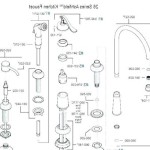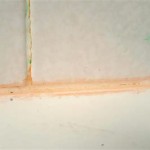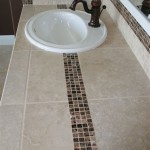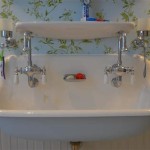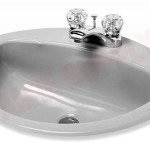Bathroom Sink Pipe Types: A Comprehensive Guide
Bathroom sink pipes are essential components of plumbing systems, responsible for delivering water to the sink and draining waste. Understanding the different types of pipes used in bathroom sinks is crucial for homeowners, plumbers, and DIY enthusiasts alike. This comprehensive guide provides an in-depth overview of common bathroom sink pipe types, their characteristics, and considerations for selection and installation.
Copper Pipes
Copper pipes have long been a popular choice for plumbing due to their durability, corrosion resistance, and ability to handle high water pressures. In bathroom sinks, copper pipes are commonly used for both hot and cold water supply lines. Copper pipes are available in various sizes and thicknesses, with thicker walls providing greater pressure resistance. The material is also highly resistant to corrosion, making it suitable for both potable and non-potable water systems. However, copper pipes are susceptible to thermal expansion and contraction, which can lead to leaks if not properly installed.
PVC Pipes
Polyvinyl chloride (PVC) pipes are a cost-effective and versatile option for plumbing applications. They are lightweight, easy to install, and resistant to corrosion and chemicals. PVC pipes are commonly used for drain lines in bathroom sinks, as they are highly resistant to waste and sewage. The material is also non-toxic and safe for potable water systems. One drawback of PVC pipes is their susceptibility to damage from freezing temperatures, which can cause the pipes to crack or break. Additionally, PVC pipes are not as durable as copper pipes and may need replacement sooner.
PEX Pipes
Cross-linked polyethylene (PEX) pipes have gained popularity in recent years due to their flexibility, durability, and ease of installation. PEX pipes are available in different colors and sizes, making them suitable for both hot and cold water supply lines. The material is also highly resistant to corrosion and chemicals, making it safe for potable water systems. Additionally, PEX pipes are flexible enough to navigate tight spaces and corners, simplifying installation. However, PEX pipes are susceptible to UV damage and may need to be protected from direct sunlight exposure.
ABS Pipes
Acrylonitrile butadine styrene (ABS) pipes are commonly used for drain lines in bathroom sinks due to their durability and resistance to chemicals and waste. ABS pipes are typically black in color and come in various sizes and thicknesses. They are also relatively lightweight and easy to install, but require specialized glue for joining. ABS pipes are resistant to corrosion and chemicals, making them suitable for waste and sewage systems. However, ABS drains are not as resistant to extreme temperatures as other materials, such as PVC pipes, and may crack or break in cold climates.
Choosing the Right Pipe Type
The best type of pipe for a bathroom sink depends on various factors, including the intended use, budget, local building codes, and personal preferences. Copper pipes offer durability and corrosion resistance but can be more expensive than other options. PVC pipes are a cost-effective choice for drain lines but are not as durable as copper or PEX pipes. PEX pipes are flexible, durable, and easy to install but may be susceptible to UV damage. ABS pipes are durable and resistant to chemicals but are not as resistant to extreme temperatures as other materials.
Installation Considerations
Installing bathroom sink pipes requires knowledge and expertise in plumbing practices. It is essential to comply with local building codes and use appropriate tools and materials. Professional plumbers can ensure proper installation and prevent potential problems such as leaks and damage. DIY enthusiasts should consult with knowledgeable sources and follow manufacturer instructions carefully.
Maintenance and Repair
Regular maintenance is crucial for ensuring the longevity and efficiency of bathroom sink pipes. It includes inspecting for leaks, corrosion, and blockages. If any issues are detected, prompt repair is recommended to prevent further damage and costly repairs. Properly maintaining bathroom sink pipes can help minimize plumbing problems and extend their lifespan.

Kitchen Sink Drain Parts Diagram Decorating Ideas On A Budget Check More At Ht Bathroom Stopper Plumbing

Types Of Pipe Fittings The Home Depot

Types Of Plumbing Pipes In Your House Motor City And Drain

8 Types Of Pipes To Know In Your Home Or Office

What Size Pipe For Sink Drain Choosing Tips

16 Diffe Types Of Bathroom Sinks

A Quick Guide To Your Bathroom Sink Plumbing

What Is The Bathroom Sink Plumbing Rough In Heights

Under Sink Plumbing At Com

How To Fit A Bathroom Sink Diy Guides Victorian Plumbing
Related Posts


